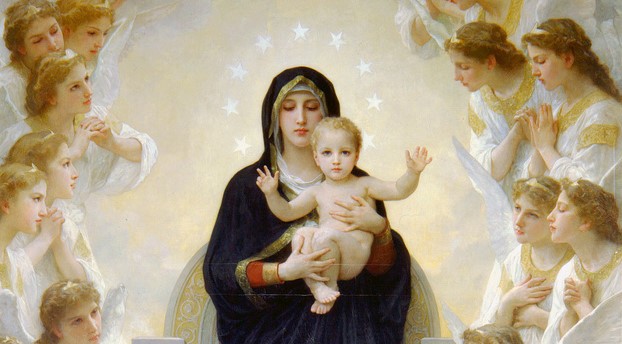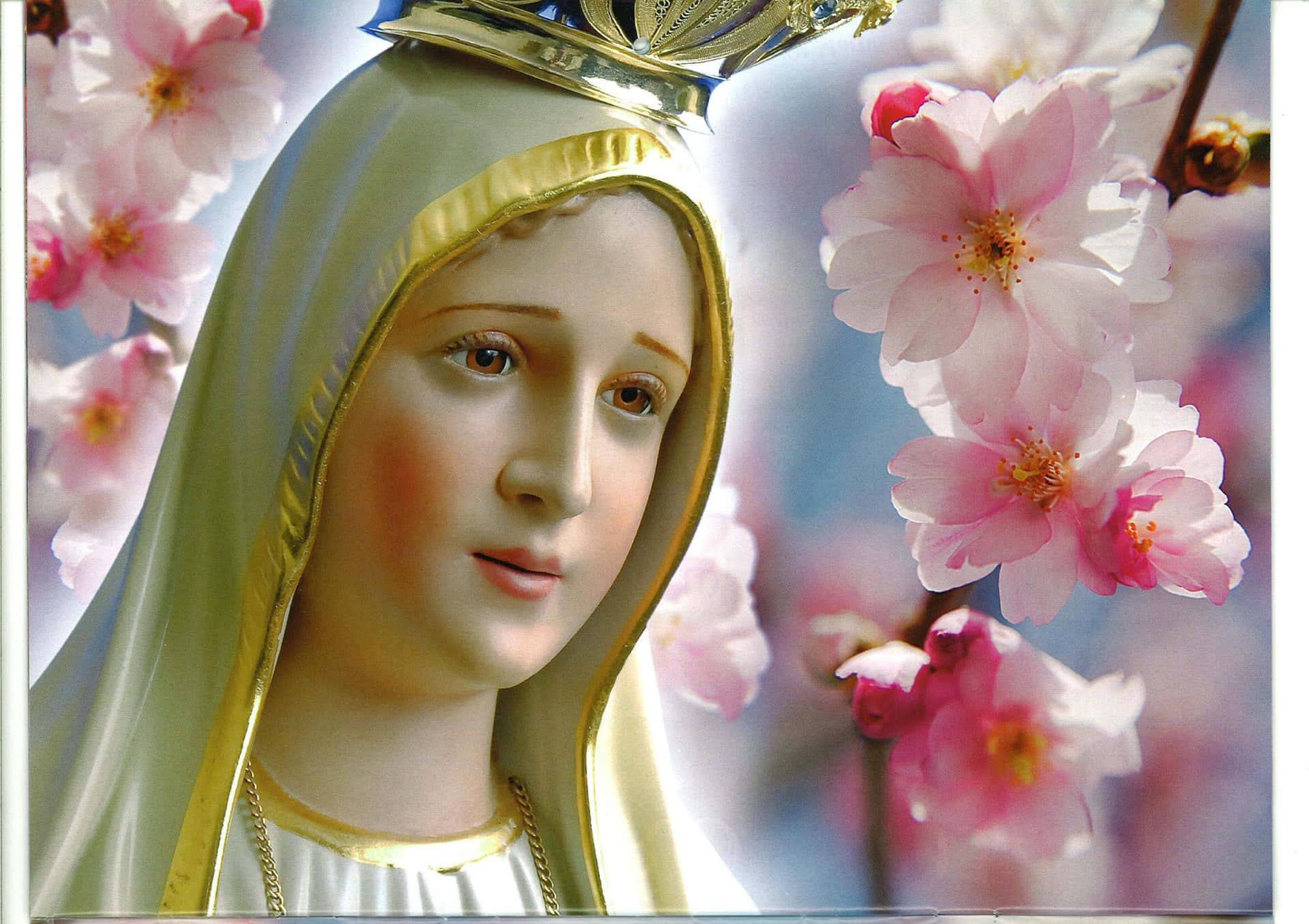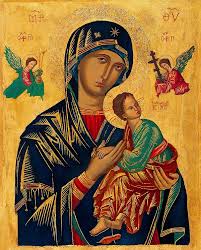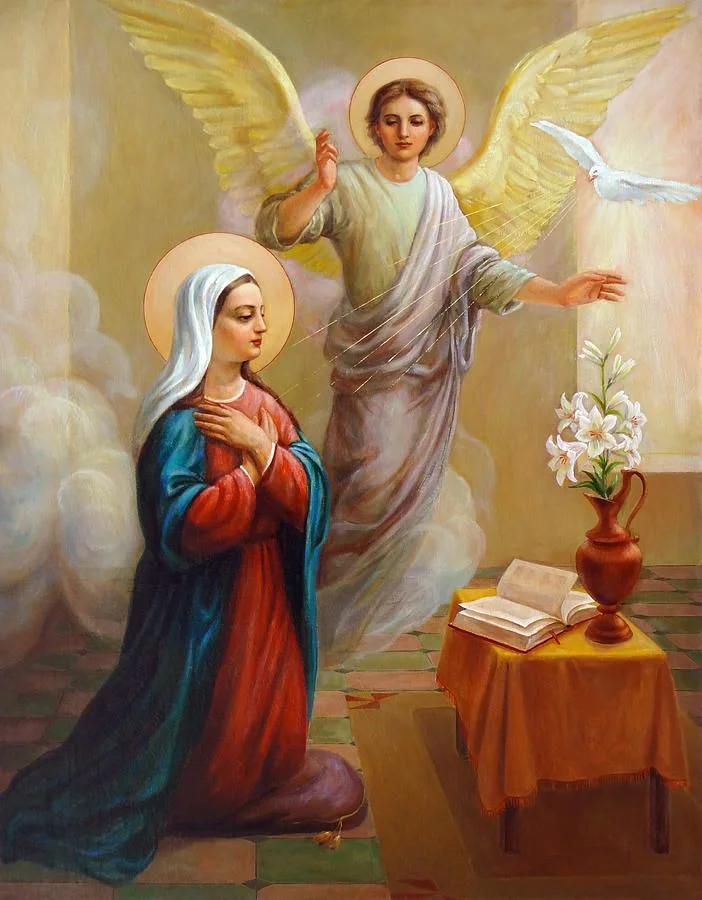Mary's Intercession: A Theological Exploration of Grace and Mediation
Introduction
Within the framework of Catholic theology, the concept of mediation plays a significant role in understanding the relationship between humanity and the divine. This article explores the theological significance of Mary's intercession, examining its basis within established doctrines and its practical application in the lives of believers. Key concepts such as mediation, intercession, and grace will be defined and applied to illustrate Mary's role as a conduit to divine grace. Mediation, in this context, refers to Mary’s act of presenting the needs and prayers of humanity to God. Intercession denotes the act of pleading on behalf of another. Grace, within Catholic theology, signifies God's unmerited favor and transformative power, freely bestowed upon humanity. This exploration will delve into scriptural interpretations, theological traditions, and devotional practices to understand the multifaceted nature of Mary's role in facilitating access to God's grace.
Mary's Unique Position: The Theotokos and Her Maternal Intercession
The foundation of Mary's intercession lies in her unique role as the Theotokos, or "God-bearer," the Mother of God. This title, central to Catholic Christology, signifies her unparalleled relationship with Jesus Christ. Applying the concept of maternal intercession, Mary's role mirrors that of a mother interceding for her child. Her intimate connection with Christ grants her a unique position to advocate for humanity's needs before God. This maternal bond doesn't diminish Jesus's divinity or efficacy of personal prayer, but instead presents a powerful image of divine compassion and accessibility, aligning with the concept of divine kenosis (self-emptying) in the Incarnation. This intimate connection is further emphasized by applying the relational model of the Trinity; Mary’s relationship with Jesus allows her to draw humanity into closer communion with the Father and the Holy Spirit.
Mary's Humility: A Model for Spiritual Growth
Mary's unwavering humility, exemplified in her "Fiat" ("Let it be to me according to your word," Luke 1:38), serves as a paradigm for surrendering to God's will and accepting divine grace. Applying the virtue ethics framework, Mary's humility demonstrates the power of self-emptying and receptivity to God’s plan. This attitude is crucial for receiving grace, as pride can often hinder one's ability to accept God's gifts. This humility is not passivity, but rather a recognition of God’s sovereign power, coupled with an active willingness to cooperate in God’s plan, demonstrating a strong application of the concept of synergy between divine grace and human cooperation.
Scriptural Examples: The Wedding at Cana and the Paradigm of Intercession
The Wedding at Cana (John 2:1-11) serves as a prominent example of Mary's intercession. Her request to Jesus, "They have no wine," demonstrates her proactive role in addressing human needs. This event showcases how Mary intercedes for the needs of humanity, not through altering God's will, but by presenting the needs of others to her Son and initiating God's gracious response. Analyzing this miracle from a narrative perspective highlights the importance of Mary's role in revealing God’s compassion, while simultaneously underscoring the power of intercession as a catalyst for divine action.
Devotional Practices: The Rosary as a Means of Spiritual Connection
The Rosary, a traditional Catholic devotion, utilizes Mary as a focal point for meditative prayer. Each Hail Mary is an invocation of Mary's intercession and a reflection on the life of Christ. Using a sociological lens, the practice of the Rosary illustrates how collective ritualistic practices can foster community, strengthen faith, and reinforce the belief in Mary's powerful intercession and its role in facilitating a deeper spiritual connection with Christ.
Mary as a Symbol: The New Ark of the Covenant
Mary is often viewed as the New Ark of the Covenant, symbolically carrying the presence of God. This analogy connects the Old Testament's symbol of God's presence with the New Testament's reality of the Incarnation. Applying symbolic interpretation, Mary embodies the fulfillment of the Old Testament promises, representing the dwelling place of God’s grace among humanity. This conceptualization of Mary's role is not literal, but symbolic, and points to her role in mediating the divine presence to humanity.
The Witness of Saints: Testimonies to Mary's Intercession
Numerous saints throughout history have testified to the power of Mary's intercession. These testimonies, though anecdotal, provide evidence of the profound impact of Mary’s mediation in believers' lives. Viewed through the lens of hagiography and spiritual history, the shared experiences of saints point to the consistently observed effects of Mary’s intercession and their lived-out faith.
Marian Apparitions: Messages of Hope and Guidance
Approved Marian apparitions, such as those at Lourdes and Fatima, often feature messages emphasizing prayer, repentance, and devotion to Mary. From a religious studies perspective, these apparitions, while requiring careful discernment, can be seen as reinforcing Mary's ongoing role as a messenger of God's grace and a guide towards spiritual transformation. The psychological impact of these apparitions on individuals provides further insights into the power of faith and the role of Mary in mediating God's presence and messages to believers.
The Assumption and Heavenly Intercession
The dogma of the Assumption (Mary's bodily ascension to heaven) signifies her ultimate glorification and continued intercession from heaven. Applying theological principles of the communion of saints, Mary’s presence in heaven demonstrates the ongoing nature of her mediation and her ability to continue her intercessory role for humanity. The Assumption transcends earthly limitations and highlights the eternal nature of Mary’s relationship with God and her continued advocacy for believers.
Mary's Role in the Mystical Body of Christ
Catholic theology describes Mary as the model of the Church, and her role as the spiritual mother of all believers strengthens the concept of Mary as intercessor. This framework positions Mary as a vital figure in the Mystical Body of Christ, offering spiritual guidance and interceding for believers in their journey towards God’s grace. Her role within this framework enhances the concept of spiritual motherhood, drawing parallels to the supportive role of mothers in the earthly realm.
The Power of Prayer and the Efficacy of Intercession
The power of Mary's intercession is rooted in her profound relationship with Jesus. Drawing on the concept of sacramental theology, prayer to Mary is seen not as bypassing Christ, but rather as using a divinely ordained conduit to receive God's grace. The efficacy of prayer through Mary's intercession highlights God’s generosity and accessibility.
Conclusion and Recommendations
This exploration of Mary's intercession reveals a multifaceted theological concept deeply embedded in Catholic tradition. Mary’s role is not one of co-redemption, but rather of exemplary faith, powerful intercession, and guiding example. Further research could explore the comparative analysis of Marian devotion across various Christian denominations, and investigate the psychological and sociological impacts of Marian devotion on individual believers and communities. Understanding Mary's intercession requires a careful examination of scriptural passages, theological doctrines, devotional practices, and the historical context of her role in the Christian faith. The theological significance of Mary's intercession emphasizes her role as a model of faith, humility, and devotion, while her position as Mother of God provides a powerful framework for understanding her role as a compassionate intercessor, leading believers closer to God's grace. The efficacy of her intercession highlights the boundless nature of God's love and the richness of a relationship grounded in faith and devotion.
Reader Pool: Considering the diverse perspectives within Christianity, how might different theological interpretations of Mary's role impact the understanding and acceptance of her intercession?







